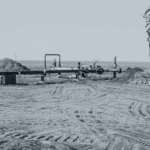Having been a lawyer looking after farmers and graziers for almost 40 years, I have focused on the future of family farms all my professional life – indeed, my practice and those of the other lawyers in our Agribusiness team depends upon it.
The issues facing agriculture in Australia are well known – droughts, floods, fire, depressed prices, labour shortages, too much debt, government interference (tree clearing and live export bans to name but two), declining terms of trade, the high Australian dollar, the average age of our primary producers etc.
As a general observation, while undoubtedly the average age of our primary producers is high, the next generation are well placed to capitalise on the world’s increasing need for protein and Asia’s growing prosperity – they are technologically savvy and have access to resources, training etc (that their forebears could only look upon with envy) to ensure that the farms of the future will be sustainable both financially and environmentally.
I was asked a few years ago what I thought was the biggest issue facing primary producers and my considered response was “lack of communication”. Farmers and graziers are, by their very nature, stoics – they have to be to cope with the myriad of challenges thrown at them. They know how to “tighten their belts” in bad times and battle through.
Producers though, in my experience, largely do not communicate about issues worrying them – droughts, debts, relationship issues, mental illness etc. These issues and the lack of communication particularly come to the forefront when we are addressing succession planning for family partnerships. My view, until recently, was that such partnerships have limited lives as the next generation takes up the “family farm”.
My view though has changed and I was intrigued to read an article in Beef Central some time ago about two Mallee grain growers and their venture into “collaborative farming”.
These two farmers started with a blank canvas and designed the ideal farm for their area. They worked with no preconceptions or restrictions and focused only on what mix of land, plant and labour would be required to create the most efficient and profitable farming business for their area.
They have combined their assets and skill base with a corporate focus that has enabled them to achieve a high level of scale, efficiency, profitability and flexibility that simply would not have been possible if they had remained as individual farming units.
Irrespective of what industry or profession you are in, it is an ever competitive and challenging business environment out there, and we all (lawyers included) have to look at ways to drive efficiencies, reduce costs and to ensure the business models are sustainable.
At Thynne + Macartney, for example, many of our lawyers now work remotely, reducing our need for high cost premises and allowing us to consolidate on a smaller floor plate. We also recognise the different strengths of our people and although we are still a legal partnership, we have moved to a corporate management model.
Having been raised in Mitchell on a property consisting of any number of 160 acre blocks carved up after World War 1 for soldier settlements, and in a wool growing era where adjoining properties all had their own woolsheds and supporting infrastructure, I can see opportunities for our farmers and graziers in “collaborative farming”.
The basic idea is that you look to others in your or related industries and put yourselves into businesses where you add the most value and be more profitable. A breeder operation, for example, can form a business partnership with the operators of a backgrounding block (and in turn, the operators of a fattening block / feedlot) where resources (whether it be land, manpower, plant, livestock or whatever) can be applied to best advantage to make the combined operation more flexible and profitable than the individual operations could ever hope to be.
As has been said before, “it’s not rocket science”.
One of the Mallee farmers, John Gladigau, is said to have identified seven core principles for “collaborative farming”:
- Be strategic – Start off with a blank piece of paper and design your future.
- Differentiate between agribusiness and real estate – Most farmers and graziers run two enterprises: a real estate business and an operations business – both have to get a return. Arguably some of our large operators in the beef industry are grappling with this issue.
- Use resources efficiently (machinery, labour and infrastructure).
- Create cells and replicate them, ie a scalable unit as the most efficient mix of land, machinery, infrastructure etc.
- Create an environment of “win‑win”– Win‑win relationships need to be built between all of the stakeholders throughout the businesses.
- Engage specialist services – The days of being a master of all trades (if they ever existed) are well and truly over. Recognise your limitations. There are areas where you need to bring in others because of their different skill set.
- An independent voice is needed – Recognise that personalities, especially in a collaborative business where families are brought together, can destroy the business. The one essential element is to have an independent voice. Look at the corporate world where it is common to have an independent chair / directors on the board.
How then do we establish a “collaborative farm”? The key issue here is that “there is no model, there are no rules”. You need to create a business that works for you and your partners. Having said that, the basic template is to set up a new company, put the various properties together, lease the properties and plant and sell your livestock to that new entity. There are legitimate steps that can be taken to minimise transactional costs, ie stamp duty, livestock transaction levies and income tax on any such restructure.
In summary, I am convinced more than ever that “the family farm has a future”. The crucial issue here though is that the form of the family farm in future may well be more complex. It is of course a complex environment in which we all live and operate.




